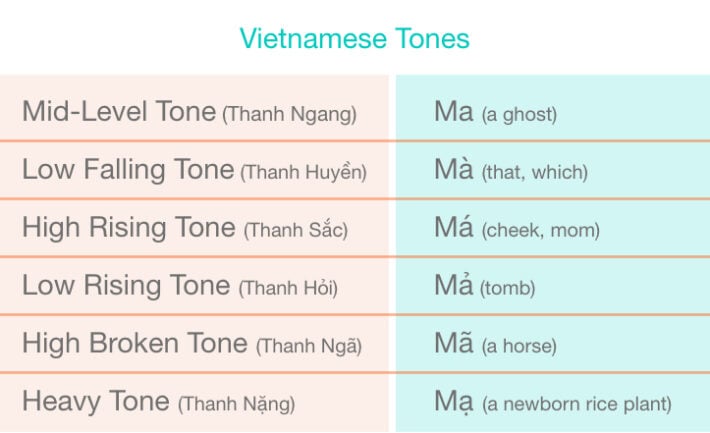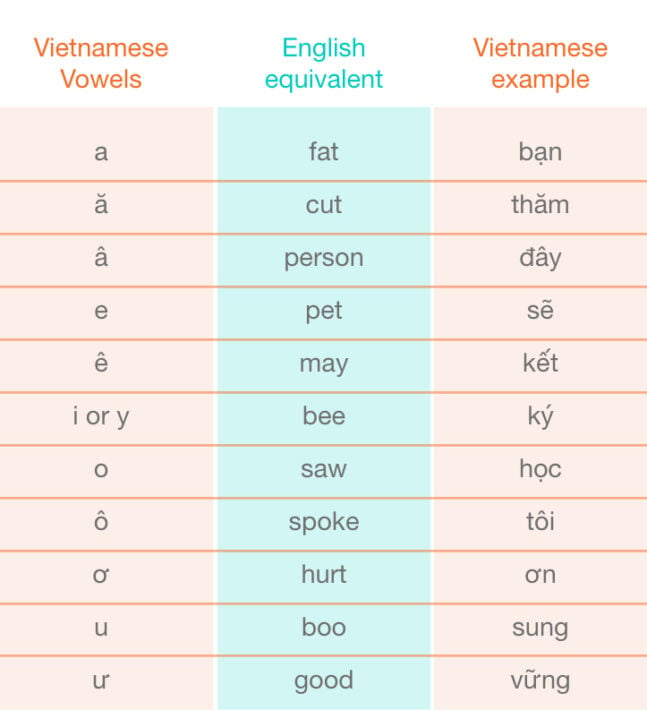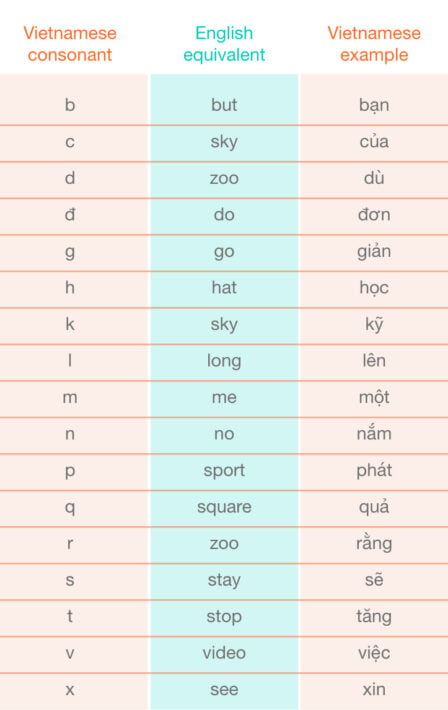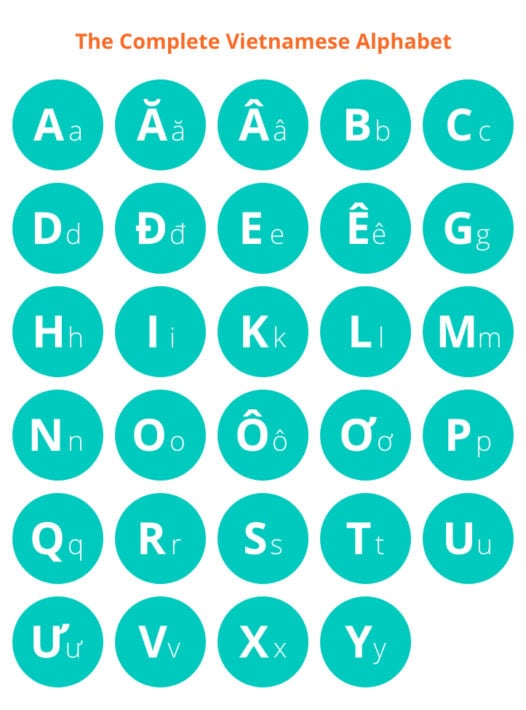Tiếng Việt for Beginners: An In-Depth Overview of the Vietnamese Language
Cảm ơn bạn đã ghé thăm blog của chúng tôi – Thank you for visiting our blog.
It seems easy to dismiss Vietnamese as a minor language. But did you know that tiếng Việt is spoken by almost 100 million people all over the globe? In fact, it’s currently the 16th most widely spoken language in the world.
Formerly known as Annamese, Vietnamese is one of the most notable members of the Mon-Khmer branch of the Austro-Asiatic language family. And one of the most international.
Spoken in countries as diverse as Australia, Canada, Finland, Senegal and Cambodia, it’s easy to see why the Vietnamese language is gaining popularity among language learners.
Linguists believe that the linguistic ancestors of Vietnamese developed in the area of the Red River in present-day Vietnam and that, in due course, this language spread into the rest of the territory.

Table of Contents
As a result of the revolution that ended the French rule over Vietnam, the Vietnamese language gained official status and eventually became the only language used for social, educational, and political purposes. Nowadays, Vietnamese is used at all levels of the educational system, including universities, and it has a strong presence in television and in publishing.
Now that you’re up to speed with the history of Vietnamese, let’s explore some of the linguistic features that make this language so unique!
Dialects of the Vietnamese Language
The Vietnamese language is not 100% homogeneous. In fact, there are three mutually intelligible varieties of Vietnamese that have more or less distinct characteristics. These are:
– The Northern dialect found in Hanoi, the cultural and political centre of Vietnam, widely seen as the standard variety of the Vietnamese language.
– The Central dialect, centred in Huế, the capital of Thừa Thiên Huế Province in central Vietnam
– The Southern dialect, or Cochinchinese, spoken in the region encompassing the southern part of Vietnam and the southern part of Cambodia.
Vietnamese – A Tonal Language Full of Vowels
Vietnamese is a tonal language. This means that the meaning of words can be affected by pitch, as you can see in the chart below.
There are six tones in the Vietnamese language. Let’s see which diacritics are used for each tone and how they can affect the meaning of a word:

Chart explaining the tones of the Vietnamese language
As regards its sounds, the Vietnamese language has a wide array of vowels but no consonant clusters, meaning that it is rare to find two consonants together. The syllable pattern is generally CVC (consonant-vowel-consonant) although there is some variation in this structure across the three dialects mentioned above.
Let’s explore in detail how the sound system of the standard variety of Vietnamese works!
Vowels
The Vietnamese language has one of the richest sets of vowels in any language, with 11 pure vowels, a variety of diphthongs and even a few triphthongs.
Unfortunately, the spelling-to-sound rules are very complex when it comes to vowels, which means that a single letter can represent different pronunciations and that a single sound can be represented by different letters.

Chart showing all the vowels of the Vietnamese language and how to pronounce them
Consonants
Depending on the dialect, the Vietnamese language has an inventory of 19-21 consonant sounds. The ones given below belong to the Hanoi variety.

Chart explaining all the consonants in Vietnamese and their pronunciation
Just bear in mind that the English equivalents are just a close approximation of what these Vietnamese letters sound like, so they are not always exactly the same.
Some notes on Vietnamese consonants:
– /p/ is used only in loanwords from French.
– /ɓ/ and /ɗ/ are articulated with the vocal folds held together resulting in a plosive sound when the contact is released.
– /ʈ, ʂ, ʐ/ are retroflex sounds, which means they are articulated with the tip of the tongue curled in such a way that its underside touches the roof of the mouth.
– /tʰ/ is released with a strong burst of air.
– /c, ɟ,x, ɣ/ have no equivalent in English.
– /ɲ/ is said like the first n in the word “companion”.
– /ŋ/ is said like the ng in “song”.
– /j/ is said like the y in “yacht”.
Vietnamese Grammar
As with many languages from the same family, the Vietnamese language is analytic. This means that it doesn’t rely on inflections to establish grammatical relationships. Instead, these are expressed through word order and the use of different particles.
As far as verbs are concerned, they are not inflected for person or number. Again, speakers signal tense, aspect and mood with the addition of particles.
Similarly, Vietnamese nouns are not inflected for number, gender, or case. Instead, they make exhaustive use of morphemes that indicate which category a noun belongs to, for example animate or inanimate objects, places, nouns to refer to people, etc. The way in which nouns are classified into categories and subcategories is not unlike that of Chinese.
As regards word order, Vietnamese follows a subject-verb-object (SVO) order, just like English.
Forms of Address and Reference
Vietnamese people are very respectful of titles and words of reference. Expressing an attitude of modesty when talking to others is very important for Vietnamese culture, and this effect is achieved by addressing others in honorific terms that show respect for their age, wisdom or social status.
For example, the term ngoại (grandmother) is used in formal exchanges with strangers to express politeness.
Vietnamese Vocabulary
It’s believed that over 50% of Vietnamese words are borrowings from Chinese, incorporated over the 1,000 years during which Vietnam was under Chinese rule. Additionally, some Vietnamese words have been combined with Chinese loanwords resulting in hybrid Chinese-Vietnamese compounds.
But Chinese was not the only big language to influence Vietnamese. As a result of the conquest of Vietnam by France in the late 19th century, French slowly replaced Chinese as the official language for official communication, education, and politics.
Consequently, Vietnamese started to borrow a lot of words from French, like phim (film) from the French filme; ca phé, from café; and ga to, from gateau (cat).
Nowadays, the Vietnamese language is seeing constant additions as a result of new scientific and technological discoveries, such as “tivi” (from TV).
Compounding and Reduplication
No matter what language we are talking about, speakers are constantly creating new words. One of the ways in which Vietnamese speakers do this is by combining two words into one, as in bàn ghé (literally “table chair”), which joins two different terms to mean “furniture”.
Reduplication, on the other hand, refers to the repetition of a word or part of a word. This technique is used to express an increase or decrease in intensity of an adjective. For example, from đỏ (red) we get đo đỏ (reddish), implying a decrease in intensity.
Writing
The Vietnamese language used to be written with modified Chinese symbols when Vietnam was part of China.
Present-day Vietnamese, however, uses a Latin-based system created by Jesuit missionaries in the 17th century. Originally, this alphabet was used for religious writings. However, in the 19th century the system became mandatory for all public communication.
Its predominance was further solidified when education became widespread in the country in the early 20th century. Since then, it has extended its reach and is now used for all public and private texts written in the Vietnamese language.
This is an overview of the Latin-based Vietnamese writing system:

Chart with the complete Vietnamese alphabet
As you can see, the letters f, j, w, z are missing from the Vietnamese alphabet. However, they are frequently used when writing foreign names and borrowed terms.
Did any of these facts about the Vietnamese language surprise you? Feel free to use the comment box to share your thoughts.
We hope that, after reading our blog, you find Vietnamese less scary.
Are you feeling really brave? Then take a Vietnamese course with a native Vietnamese teacher and put your skills into practice. At Listen & Learn, we offer personalised one-to-one or group lessons based on each student’s needs and preferences. Reach out to us now and a member of our staff will help find the ideal course for you!


